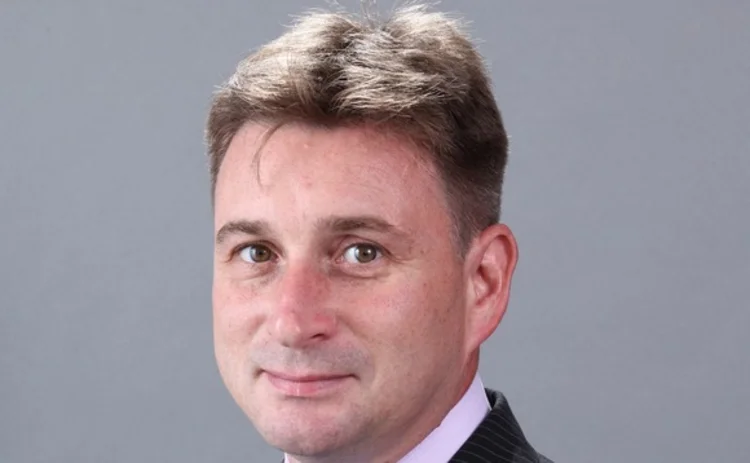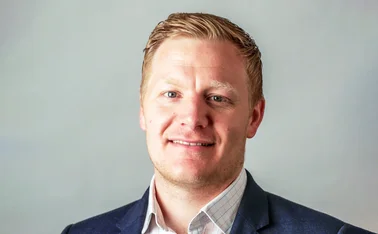
Claims Conference Asia: A CCTV on fraud

Ahead of the Claims Conference Asia 2014 Andrew Tjaardstra, editor, Asia, Post interviews Chris Fordham, managing partner, fraud investigation & dispute services, Asia-Pacific, EY and Jack Jia, director, fraud investigation & dispute services, EY at EY’s Hong Kong offices.
As billions of premiums are collected and distributed each year, insurers are all too often at the frontline of multiple attempts to exaggerate and make up claims, in addition to made up policies.
When fraud is attempted, it is not just money on the line, but also a company’s reputation.
EY’s Asia-Pacific Fraud Investigation & Dispute Services (FIDS) department is committed to helping insurers in the life and general insurance sectors identify previous fraud, spot patterns and enhance practices to help mitigate and prevent further fraudulent activity. The global consultancy has a network of 270 people working in the FIDS business with half of the team based in China and Hong Kong.
An EY survey of over 680 company executives across eight countries in the Asia-Pacific region revealed that 78% thought that "the use of technology to examine all transactions across the company would result in better fraud detection and more effective prevention of corruption."
Data visualisation
EY helps the insurance community utilise sophisticated technology and data analytics techniques to drill down into countries, agencies, product lines and policies and identify fraud through data visualisation.
Hong Kong - based Fordham, pictured, who oversees EY’s Asia-Pacific FIDS division, says: “Insurance has become a key focus. We have built up our expertise and more insurers are using our services to identify incidents of fraud after they happen but more importantly they are look at the proactive measures they can put in place to mitigate fraud before it happens."
He continues: "We use forensic data analytics in a collaborative way help internal audit and compliance teams to identify red flags using risk weighting. We then verify results and help make compliance more focused and efficient.”
EY has a ‘Know Your Agents’ Analytics Service which applies predictive analytics, mathematics, linguistics and professional know-how to help monitor and detect potential agent fraud or suspicious behavior patterns.
Through scoring models, interactive dashboards, heat maps and predictive modeling, an insurer can become more aware of the potential of fraud at its agency base.
Jia cites an example of a life insurer where agents were creating fraudulent policies and claims. The fraudulent policies were created to generate commission and the agents then claimed on the policies, some of which were their own. The agents had also colluded with other individuals which it had used as ‘customers’.
Fordham says EY were asked to investigate.
He comments: "We look for patterns in the data, for example the population of transactions. We then proactively take that pattern and look for similar ones – we can identify agents behaving in a similar way. We can extrapolate a larger population of potential risks and ask – could this be happening elsewhere? For example, in other agents, jurisdictions or products."
Jia adds: "Sometimes the agents & customers have common addresses – this could be a red flag."
Countries have different payment methods (e.g. cash in Malaysia) and also different business practices so it is important to analyse on a country-by-country basis.
Claims leakage
Another important area for EY is tackling claims leakage. Using predictive models of claims’ losses the financial services team which includes actuaries can help improve loss ratios by building red flags and risk indicators into the claims process.
EY works with motor and health insurers across the region in this area and can help develop a fraud risk score for each claim.
To help mitigate fraudulent activities, EY helps identify red flags and suggests changes in processes in distribution and claims monitoring for different insurers, differentiating between products, distribution channels and jurisdictions.
Fordham comments: "It is important to identify the false positives by giving each risk a risk weighting. Everything needs to be taken into account such as local holidays, cultures and payment methods."
Jia adds: "We want to monitor claims behavior like a CCTV. We want to be able to predict and monitor fraudulent patterns based on past behaviour and can provide the insurer live data. We also want to teach the insurer how to do this themselves."
The EY FIDS team builds in variables and then enables the insurer to act unilaterally moving forward. It is an ongoing process as insurers introduce new partnerships and products, and launch in more countries.
As fraud moves up the priority list for the insurance community in Asia-Pacific, expect insurers, reinsurers and brokers to have a more collaborative approach to sharing data. For example, the UK has set-up the Insurance Fraud Bureau (www.insurancefraudbureau.org) to unite resources.
Expect an increasing level of sophistication when it comes to addressing fraud in the Asia-Pacific region over the next five years.
Above all, Jia emphasises the importance of "stopping fraud early before it snowballs".
EY is headline sponsor of the Claims Conference Asia 2014. Jack Jia will be speaking at the conference. For more details see www.claimsconferenceasia.com
EY is also headline sponsor of the Claims Club Asia - for more details see www.claimsclubasia.com
EY has also released a whitepaper on fraud entitled: Building a more ethical business environment - Asia-Pacific fraud survey report series 2013. You can read it at www.insurancehound.co.uk
Only users who have a paid subscription or are part of a corporate subscription are able to print or copy content.
To access these options, along with all other subscription benefits, please contact info@postonline.co.uk or view our subscription options here: https://subscriptions.postonline.co.uk/subscribe
You are currently unable to print this content. Please contact info@postonline.co.uk to find out more.
You are currently unable to copy this content. Please contact info@postonline.co.uk to find out more.
Copyright Infopro Digital Limited. All rights reserved.
As outlined in our terms and conditions, https://www.infopro-digital.com/terms-and-conditions/subscriptions/ (point 2.4), printing is limited to a single copy.
If you would like to purchase additional rights please email info@postonline.co.uk
Copyright Infopro Digital Limited. All rights reserved.
You may share this content using our article tools. As outlined in our terms and conditions, https://www.infopro-digital.com/terms-and-conditions/subscriptions/ (clause 2.4), an Authorised User may only make one copy of the materials for their own personal use. You must also comply with the restrictions in clause 2.5.
If you would like to purchase additional rights please email info@postonline.co.uk








